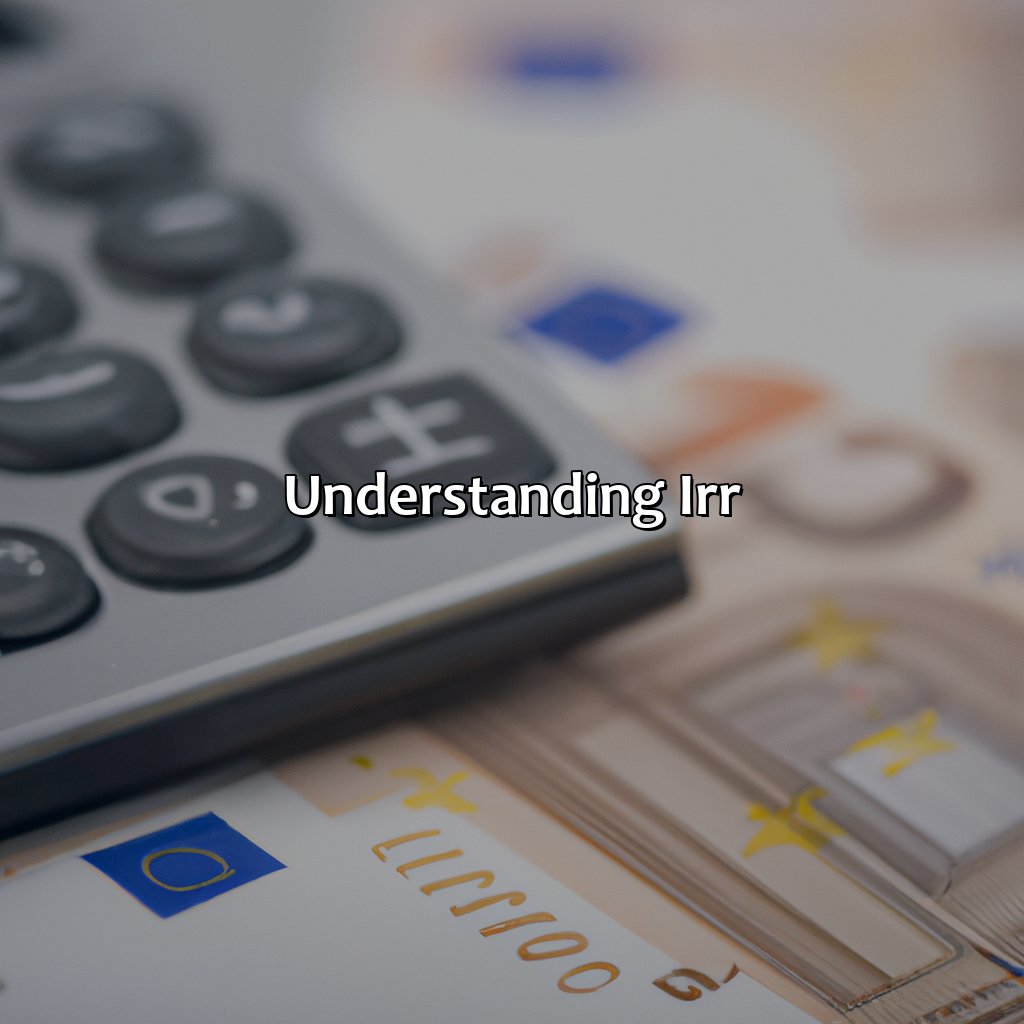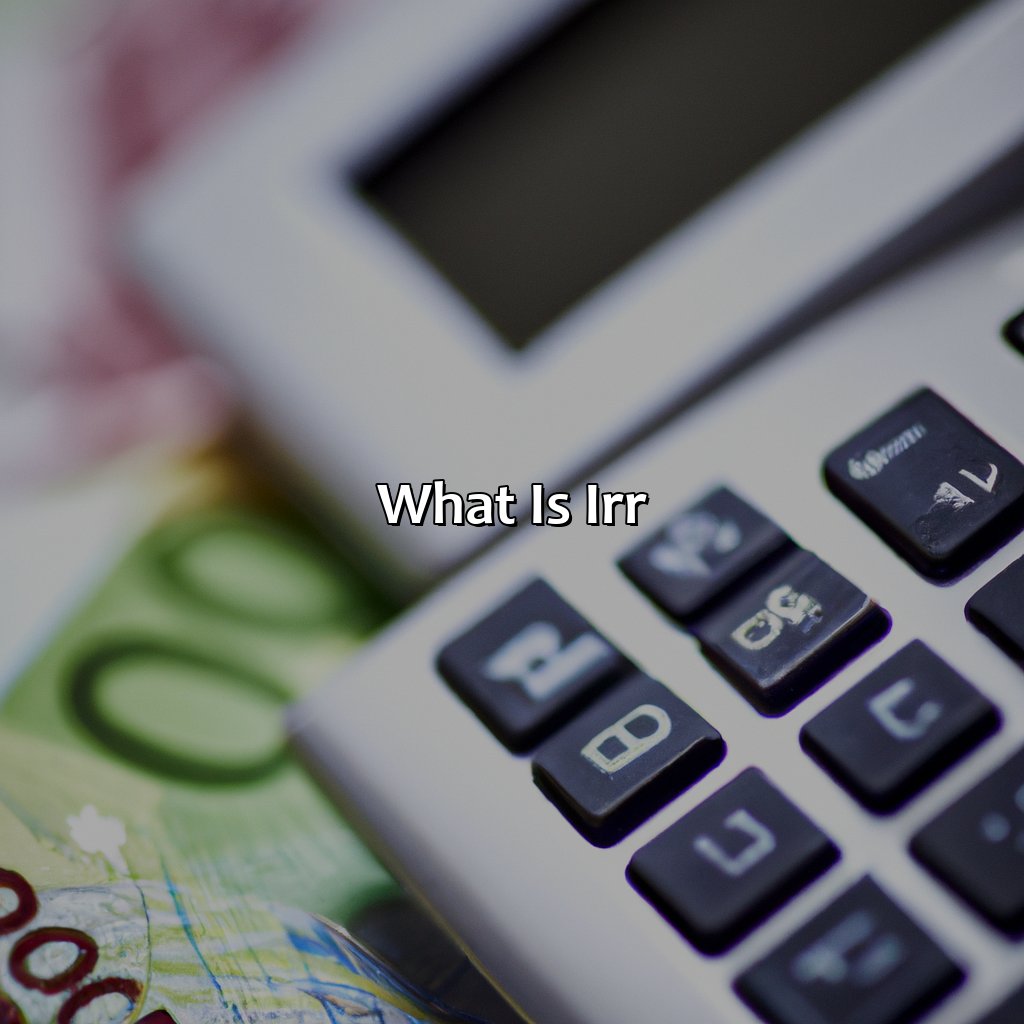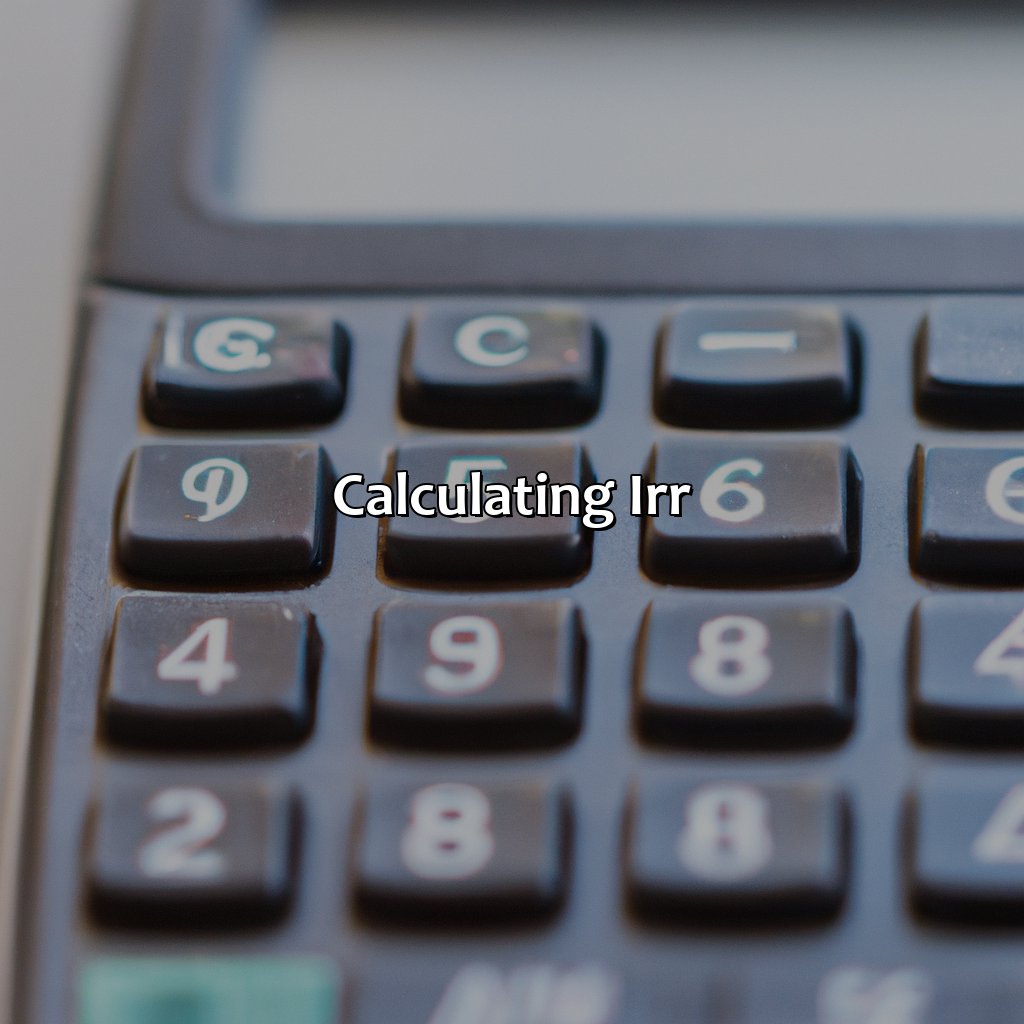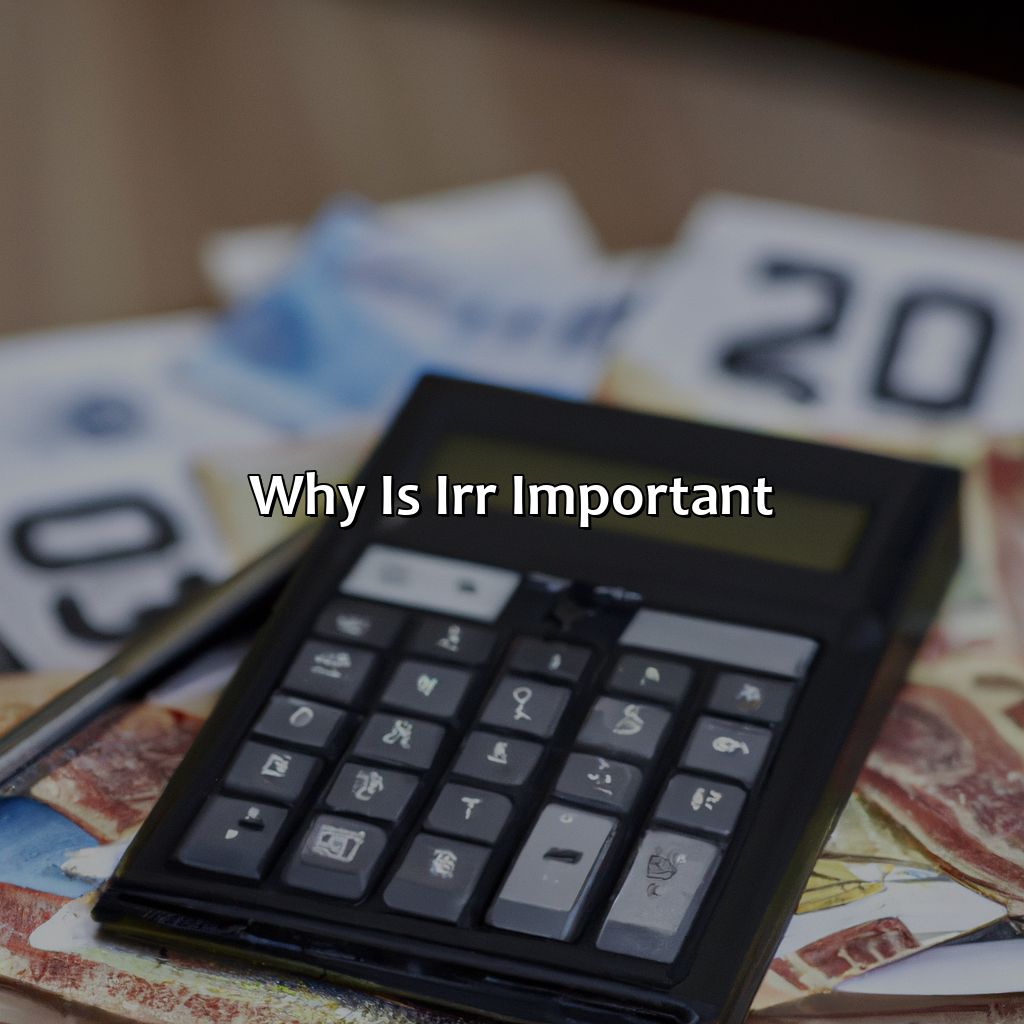What Is Irr In Investment?
Key Takeaway:
- IRR is a financial metric that measures the profitability of an investment by examining the expected rate of return. This means that IRR helps investors to understand the probable return on investment, helping them to make more informed investment decisions.
- Calculating IRR involves the use of complex financial formulas, such as the Net Present Value (NPV) formula. For simpler calculations, investors can use pre-built Excel templates or online calculators to determine their IRR.
- IRR is important because it offers a way for investors to evaluate investment opportunities by comparing the expected return on investment against the initial investment costs. This can help investors to identify high-performing investments and avoid those that are likely to yield low returns.
Do you want to make better investment decisions? Learning what is IRR is the key to maximizing your earnings and minimizing your losses. Discover the basics of IRR and how it can help you achieve your financial goals.
Understanding IRR
Investment decisions are primarily based on expected returns and the risks involved. Internal rate of return (IRR) is a powerful tool that helps in evaluating the profitability of an investment by considering the time value of money. It indicates the average annual rate of return a project or investment generates over its lifetime. IRR measures the discount rate at which the present value of future cash flows equals the initial investment. The higher the IRR, the more lucrative the investment opportunity.
To calculate IRR, you need to determine the expected cash inflows and outflows over the investment period. Then, you need to determine the discount rate that sets the present value of these cash flows equal to zero. If the calculated IRR is higher than the cost of capital, then the investment is profitable. IRR is commonly used in real estate, private equity, venture capital, and other industries.
IRR has some limitations as it assumes that all cash flows generated by the investment are reinvested at the same rate, which may not be true. Additionally, IRR does not consider the size of the investment or the time it takes to generate cash flows. It also does not account for the fact that cash flows that occur later in the investment period may have less value due to inflation.
According to Investopedia, the IRR calculation assumes that all cash flows generated by the investment are reinvested at the same rate. Therefore, the results may not be entirely accurate in reality.

Image credits: retiregenz.com by Adam Duncun
What is IRR?
Investment decisions require careful consideration of various factors, including financial returns. One metric used to evaluate the profitability of an investment is the Internal Rate of Return (IRR). Simply put, IRR is the rate at which an investment breaks even. This metric considers the time value of money, meaning that a dollar today is worth more than a dollar tomorrow. In other words, IRR represents the percentage return that an investment is expected to generate over its lifetime. This measure is valuable in comparing investment opportunities with varying rates of return and in determining which investment projects to pursue or reject.
Investors must note that IRR is not a definitive indicator of the profitability of an investment. It does not consider other factors like the size and longevity of the investment. Moreover, IRR assumes that all cash flows from the investment are reinvested at the same rate, which might not be realistic. Nevertheless, IRR, when used with other metrics, can provide insight into the attractiveness of an investment opportunity.
A unique feature of IRR is that it considers both negative and positive cash flows. This feature accounts for the timing of cash flows and helps investors identify which investment projects are likely to provide the highest returns. Thus, IRR is useful when evaluating a range of investment opportunities, including complex investments with multiple cash flows.
Pro Tip: Investors using IRR should first understand the limitations of the metric and use it in combination with other performance measures, such as net present value, to measure the potential returns on an investment accurately.

Image credits: retiregenz.com by David Washington
Calculating IRR
Investors use a metric called Internal Rate of Return (IRR) to calculate the potential profitability of an investment. The IRR represents the expected returns on a project or investment over time, taking into account the time value of money. To determine the IRR of an investment, future cash flows are discounted to their present value. Then, the discount rate is adjusted until the sum of the present values equals the initial investment. This adjusted discount rate is the IRR.
It is important to note that IRR can be a complicated calculation, especially as the number of cash flows increases. However, there are online calculators and spreadsheet functions available to simplify the process. It is also worth noting that IRR does have limitations and should be considered alongside other metrics when making investment decisions.
Pro Tip: When evaluating investment opportunities, consider conducting sensitivity analyses around varying assumptions of cash flows and discount rates to understand how changes may impact the IRR.

Image credits: retiregenz.com by Joel Washington
Why is IRR Important?
Investors often use internal rate of return (IRR) as a critical investment metric to determine the profitability and risk of a potential investment. IRR is essential for evaluating a potential investment because it measures the projected rate of future cash flows that considers both the size and timing of each cash flow. This helps investors to understand if the investment is worth pursuing and in designing strategies, which can provide robust returns.
Furthermore, the IRR is crucial in analysing various investment opportunities that require different initial cash outlays and offer various cash flow streams over an investment period. Investors can compare two or more investment opportunities with varying timeframes, cash flow profiles, and capital requirements using IRR, making the process of selecting the most profitable investment easier.
Investors can use IRR to make better investment and capital budgeting decisions, as IRR takes into account not only the initial investment but also the time value of money, making it an accurate method of assessing the expected returns from an investment. By comparing the IRR of multiple investments, investors can easily decide on the most profitable investment option.
In fact, the IRR methodology has seen a significant increase in its use in recent years. Many investors have used IRR to evaluate the historical performance of their past investments, and some even go to the extent of using it as a benchmark to evaluate the performance of their fund managers.

Image credits: retiregenz.com by David Arnold
Limitations and Considerations
Limitations and Considerations in IRR Investment:
When considering an investment, it is crucial to evaluate the potential limitations and considerations related to Internal Rate of Return (IRR). One crucial limitation is that IRR is only useful when the cash flow of an investment is a one-time investment. In situations where cash flow is irregular or ongoing, IRR may not be an accurate measurement. Additionally, IRR does not consider the value of additional investments made during the investment period.
Furthermore, investors need to consider the time value of money while analyzing IRR, and any abnormal capital gains taxes that may arise. Investors should also avoid relying on IRR as the only measurement of an investment’s value as it does not take into account other crucial factors such as market risk, inflation rate, liquidity and management costs.
To account for these limitations, investors may consider secondary analysis measures such as a discount rate adjustment or using other methods to supplement their IRR evaluation. Selecting an appropriate investment timeframe and a suitable discount rate can also enhance overall IRR investment assessment.

Image credits: retiregenz.com by Adam Woodhock
Some Facts About IRR in Investment:
- ✅ IRR (Internal Rate of Return) is a financial metric used to calculate the profitability of an investment. (Source: Investopedia)
- ✅ IRR takes into account the time value of money and the expected cash flows from the investment. (Source: The Balance)
- ✅ The higher the IRR, the more profitable the investment is considered to be. (Source: Forbes)
- ✅ IRR can be used to compare different investment opportunities and help in making investment decisions. (Source: Corporate Finance Institute)
- ✅ IRR is not without its limitations and potential drawbacks, including its sensitivity to assumptions and the possibility of multiple or non-real solutions. (Source: Harvard Business Review)
FAQs about What Is Irr In Investment?
What is IRR in investment?
IRR stands for Internal Rate of Return, which is a measure of the profitability of an investment. It calculates the percentage rate earned on each dollar invested for each period it is invested.
How is IRR calculated?
IRR is calculated using a formula that takes into account the initial investment, cash inflows and outflows, and the time period of the investment. The formula requires using trial and error to find a rate that makes the cash inflows and outflows equal to zero.
What is a good IRR for an investment?
A good IRR for an investment depends on the type of investment and the risk involved. Generally, an IRR greater than the cost of capital is considered good. However, a higher IRR doesn’t always mean a better investment as it may also come with higher risk.
What are the limitations of IRR?
IRR has some limitations as a measure of investment profitability, such as assuming that cash inflows are reinvested at the same rate as the IRR and not accounting for changes in the cost of capital. It also doesn’t take into account the length of the investment period or the size of the investment.
How does IRR relate to other investment metrics?
IRR is just one of the many financial metrics investors use to evaluate an investment. It is often used in conjunction with other metrics such as the net present value (NPV) and return on investment (ROI) to provide a more complete picture of a potential investment’s performance.
Can IRR be negative?
Yes, IRR can be negative, which indicates that the investment is not profitable. A negative IRR means that the sum of the cash outflows exceeds the sum of the cash inflows, and the investment is losing money.
